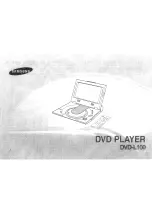
SPECIFICATIONS SUBJECT TO CHANGE WITHOUT NOTICE
2
SPECIFICATIONS
SAFETY AND OPERATION RULES
1
2
3
4
5
6
7
9
8
10
11
12
13
Read carefully and understand operator manual before
operate this product. Read and understand engine
manual prior to operation. Follow all warnings and
instructions.
Know your equipment. Consider the applications,
limitations and the potential hazards specific to your
unit.
Equipment must be placed on a firm, supporting
surface.
Load must be kept within rating stated on generator
nameplate. Overloading will damage the unit or shorten
its life.
Engine not to be run at excessive speeds. To operate
an engine at excessive speeds increases the hazard
of personal injury. Do not tamper with parts which may
increase or decrease the governed speed.
To prevent accidental starting, always remove the spark
plug or cable from the spark plug before maintaining the
generator or engine.
Units with broken or missing parts, or without protective
housing or covers, should never be operated. Contact
your service center for replacement parts.
Units should be not operated or stored in wet or damp
conditions or highly conductive locations such as
metal decking and steel work.
SAFETY INFORMATION
DANGER
indicates a
potentially hazardous situation
which, if not avoided, WILL
result in death or serious injury.
WARNING
indicates a
potentially hazardous situation
which if not avoided could result
in death or serious injury.
CAUTION
indicates a potentially
hazardous situation which, if not
avoided, may result in minor or
moderate personal injury, or
property damage.
DANGER
WARNING
CAUTION
Keep the generator clean and free of oil and other
foreign matter.
Extension cords, power cords, and all electrical
equipment must be in good conditions. Never operate
electrical equipment with damaged or defective cords.
Store the generator in a well ventilated area with
the fuel tank empty. Fuel shall not be stored near
the generator.
Your generator should never be operated under these
conditions:
• Uncontrolled change in engine speed.
• Electrical output loss.
• Overheating in connected equipment.
• Sparking
• Damaged receptacles
• Engine starting failure
• Excessive vibration
• Flame or smoke.
• Enclosed compartment.
• Rain or inclement weather. Do not let the unit get wet
when operating.
Check the fuel system periodically for leaks or signs of
deteriorations, such as chafed or spongy hose, loose
or missing clamps, or damaged tank or cap. All defects
should be corrected before operation.
Summary of Contents for G120MG2200RV
Page 1: ......
Page 10: ...SPECIFICATIONS SUBJECT TO CHANGE WITHOUT NOTICE 10 WIRING DIAGRAM ...
Page 11: ...SPECIFICATIONS SUBJECT TO CHANGE WITHOUT NOTICE 11 IDLE DOWN WIRING DIAGRAM ...
Page 12: ...SPECIFICATIONS SUBJECT TO CHANGE WITHOUT NOTICE 12 G120 G135 SPARE PARTS LIST ...
Page 22: ...ESPECIFICACIONES SUJETAS A CAMBIO SIN PREVIO AVISO 22 DIAGRAMA DE CABLEADO ...



































